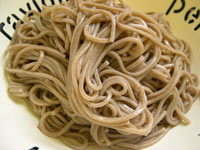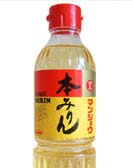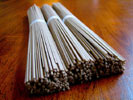 Serves 4, vegan Serves 4, vegan |
||
|
This is a dish where the noodles are served cold with a dipping sauce. Tsuyu can be bought in bottles but if you have some dashi it is very simple to make. If you don't have any dashi I have developed a very tasty
quick alternative miso based dipping sauce.
|
||
|
Tsuyu dipping sauce 500ml (2 cups) dashi 75ml (one third cup ) soy sauce 75ml (one third cup ) mirin Quick miso dipping sauce 2 teaspoons vegetable stock powder 3 teaspoons miso 500ml (2 cups) hot water 75ml (one third cup ) soy sauce 75ml (one third cup ) mirin 250g pack dried soba noodles 1 sheet nori seaweed 1 bunch of spring onions wasabe to serve. |
Tsuyu sauce To make this sauce make up your dashi and then simply place the ingredients in a pan and warm them together for a few minutes. Serve cold or warm if you wish. Alternatively, make the quick sauce by placing the miso and the stock in a bowl. Boil the kettle and add 500ml (2 cups) of the hot water. Stir to dissolve the miso and stock powder and then add the other ingredients. Bring a pan of hot water to the boil and add the noodles giving them an initial stir to separate them. Boil them for 4 minutes and then put the pan in the sink and run cold water over them until the water turns cold. Drain well. If you are not using them straight away drizzle a little sesame oil over them and toss them a little so the oil coats them. This will prevent them sticking when you store them. Serve the cold noodles with the dipping sauce, chopped springs onions, finely cut nori seaweed and wasabe. The idea is to simply swirl chopstickfuls of the noodles in the sauce and eat. |
 |





